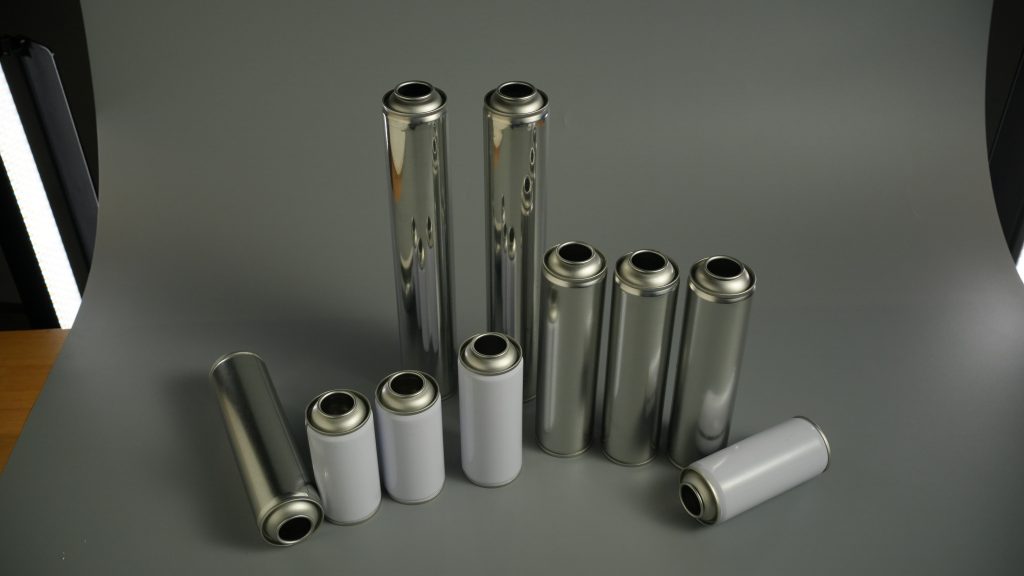
When you hear the familiar hiss and click of an aerosol can, you’re experiencing the fruit of precision engineering. Far more than a mere container, the everyday aerosol can is a marvel of packaging technology—one primarily crafted from tinplate, a material steeped in industrial history. At our company, we specialize in custom tinplate aerosol cans: the can body and the seemingly simple can end are produced separately, then masterfully assembled into a secure, reliable unit.
While aluminum is often lauded for its recyclability, tinplate remains a powerhouse in niche sectors like aerosols, paints, and specialty foods. Its strength, formability, and exceptional protective properties are unmatched for many applications. That said, tinplate does face competition—for example, PET plastic, which enables unique shapes. Yet PET is vulnerable to oil price fluctuations, whereas tinplate’s robustness and high recyclability often make it a more economically stable and sustainable choice in the long run. In regions with well-developed recycling infrastructure, the tinplate recycling loop continues to improve.
The true strength of a metal can—especially for pressurized products—lies in its superior airtightness and resistance to internal pressure. This is where the can end works its magic: for an aerosol can to function properly, the seal between the can body and can end must be flawless. Achieving this requires a sophisticated combination of engineering and materials science.
Classification and Application: Two Types of Metal Cans
Metal cans are primarily categorized by their manufacturing method. While two-piece beverage cans are widely familiar, the world of custom packaging relies heavily on the versatile three-piece can.
1. Three-Piece Tinplate Can: The Champion of Customization
Imagine a can constructed from three separate tinplate components: a cylindrical body, a bottom end, and a top end (which houses the valve for aerosols). This is the three-piece can—a design refined over nearly 200 years.
- Construction: Historically, the can body’s side seam was sealed with solder; today, welding is the dominant method. This modern technique eliminates lead contamination risks, reduces energy use, and boosts material strength.
- Why It Excels at Customization: The three-piece design offers exceptional rigidity and supports a wide range of shapes and sizes—square, rectangular, conical, and more. Combined with high material utilization and mature manufacturing processes, this flexibility makes it ideal for our custom tinplate aerosol cans. It is the workhorse for products that demand unique branding and specific functional requirements.
2. Two-Piece Can: The Streamlined Solution
Emerging in the mid-20th century, the two-piece can is an innovative design consisting of just two parts: a cup-shaped “body-and-bottom” unit, and a separate top end.
- Construction: The body is formed by drawing and ironing (stretching and thinning) a single metal disc (usually aluminum, but sometimes tinplate), creating a seamless container. The top end is then seamed on.
- Characteristics: This method produces cans with excellent structural integrity, often eliminating the need for leak testing. It is highly efficient for mass production. However, its shape options are more limited, and it places higher technical demands on materials and machinery. For standard-sized products like beer and soda, it is unparalleled—but for custom aerosol applications, the three-piece can remains unrivaled.
The Unsung Hero of Metal Cans: The Can End
Let’s take a moment to appreciate the can end—it is far more than a lid. For aerosol cans, the end is a sophisticated component that houses the valve mechanism. Its design is critical to both safety and functionality: it must withstand immense internal pressure while forming a leak-proof seal when crimped onto the can body. The integrity of your product—from hairspray to WD-40—depends entirely on this small, engineered masterpiece.

Packaging Advantages: Why Tinplate Stands Out
Tinplate two-piece and three-piece cans offer unique advantages that make them indispensable:
- Superior Barrier Performance: Tinplate provides an impenetrable barrier against oxygen, light, and moisture. This ensures the product inside—whether a sensitive cosmetic foam or a chemical spray—remains stable and effective throughout its shelf life.
- Robustness: The inherent strength of steel (coated with a thin layer of tin) gives these cans excellent durability, protecting them from damage during shipping and handling.
- Decorative Potential: Tinplate’s smooth, sturdy surface is an ideal canvas for high-quality printing, embossing, and varnishing, enabling striking brand presentation.
A Real-World Scenario: From Our Factory to Your Hands
Think about the last time you used a spray paint can. You shook it, pressed the nozzle, and got a perfect, even mist. That reliable experience is made possible by the precise collaboration between the custom-formed tinplate body and the expertly engineered can end—assembled and filled under controlled conditions to maintain propellant pressure. It is a small, everyday miracle of manufacturing.
Fun Q&A
Q: Why are most aerosol cans made of tinplate rather than aluminum?
A: While both materials are used, tinplate (steel with a tin coating) often offers greater rigidity and strength—critical for larger aerosol cans and products requiring higher pressure. Its magnetic properties also simplify handling on conveyor systems during filling.
Q: What is the most critical part of an aerosol can?
A: It’s a tie! The can body must be flawlessly formed to hold pressure, but the can end is arguably the MVP. A failure in the end’s seam or valve results in total product failure. Both components must be engineered to perfection.
Comparison at a Glance: Tinplate Cans
| Feature | Three-Piece Tinplate Can | Two-Piece Tinplate Can (for food/industrial use) |
| Primary Advantage | High customization (shape, size) | Seamless body; efficient for high-volume rounds |
| Best For | Custom aerosols, specialty foods, paints, technical products | Round cans for food, some aerosols, general-line products |
| Material Utilization | Excellent for bespoke projects | Highly efficient for standardized sizes |
| Pressure Resistance | Excellent (relies on seam quality) | Excellent (due to seamless construction) |
In conclusion, while packaging trends evolve, tinplate’s core benefits—strength, protection, and limitless customization potential—ensure its enduring relevance. At the heart of every reliable aerosol can lies the perfect synergy between a robust tinplate body and a precision-engineered can end.


